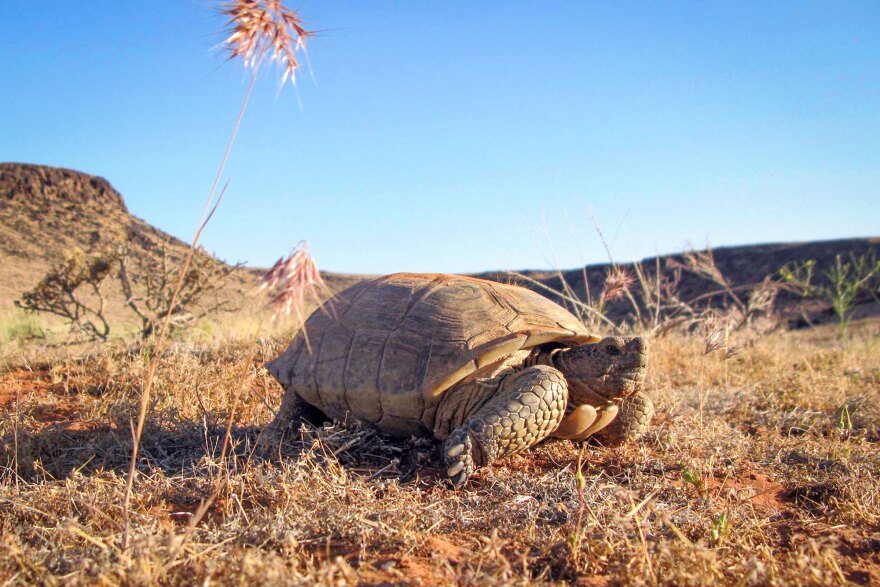Whenever strawberries are out, Shelldon comes running — or as fast as a desert tortoise can in pursuit of his favorite treat.
Shelldon is a desert tortoise that Crystal Ross adopted five years ago through the Utah Desert Tortoise Adoption Program. It was established in the 1990s to help protect the species after the desert tortoise (Gopherus agassizii, if you’re being formal) was listed as threatened under the federal Endangered Species Act. Habitat loss has caused population decline, and fires in southwest Utah during 2005 burned almost 15,000 acres of land which severely impacted tortoises.
The Utah Division of Wildlife Resources has rehomed over 300 tortoises and 39 tortoises are currently available for adoption.
The tortoises are put up for adoption for a variety of reasons including if someone illegally removed one from the wild, if a tortoise wandered into an urban area, if someone was illegally housing a tortoise or if an adopted tortoise was being surrendered.

However, adoption is not always the first option. Sarah Seegert, the DWR’s aquatic section assistant chief of native aquatics, said there is a protocol when desert tortoises are found in urban areas near their native habitat in Washington County. If it is healthy, it will be released back into the wild. If it isn’t, adoption is then considered.
“If it’s a sick animal, we don’t want to release it back into the wild because we don’t want to endanger the wild population and spread disease,” Seegert said.
Anyone in Utah that lives outside of Washington, Kane and Iron counties can apply to adopt a tortoise. People in these counties are excluded because if a tortoise runs away, it can be difficult to tell if it was a wild tortoise or a captive tortoise.
“We don’t want to risk a tortoise escaping because they are surprisingly good at escaping from their enclosures,” Seegert said.
Shelldon’s backstory is uncertain, but Ross said from her understanding he was taken from the wild illegally in the St. George area.
“A lot of well-meaning people do that down there,” she said, “when they see a tortoise, I think they think they’re helping it.”
Ever since she heard of the adoption program, Ross wanted one, but she lived in a townhouse with no yard. In order to adopt a tortoise, people need an outdoor space and it’s recommended that the entire yard be devoted to the tortoise. The area needs to be escape-proof, have burrow space and adequate cover.
Once she met all the requirements in her Davis County home, Ross applied to adopt. She eventually was approved and her husband was able to build Shelldon’s yard nearly from scratch.
“He actually had a great time putting together the habitat,” Ross said. “[Shelldon] has plenty of space to roam out there and lots of vegetation and native plants.”

Shelldon is fairly low-maintenance. He doesn’t make noise or fight with the other animals, and he hibernates in a box in the basement for six months out of the year. He’s also fun because, just like people, desert tortoises have their own personality.
“When he’s hungry, particularly hungry, he’ll stand up really tall and lift his head like extra tall and stomp around looking for food,” Ross said.
Shelldon can also get “a little bit sassy” when it’s time to go inside for the night. Often hissing in protest when Ross tries to retrieve him from his burrow.
Adopting a desert tortoise isn’t for everyone and they are a commitment. They live 30 to 50 years in the wild and can live longer than 70 years in captivity.
“We’re already grooming our kids to take him when they grow up and leave the house,” Ross said. “They know that they’re probably going to inherit Shelldon, and they’re totally cool with that.”
So, the Ross family can continue to watch as Shelldon scurries after some strawberries for a long, long time.


